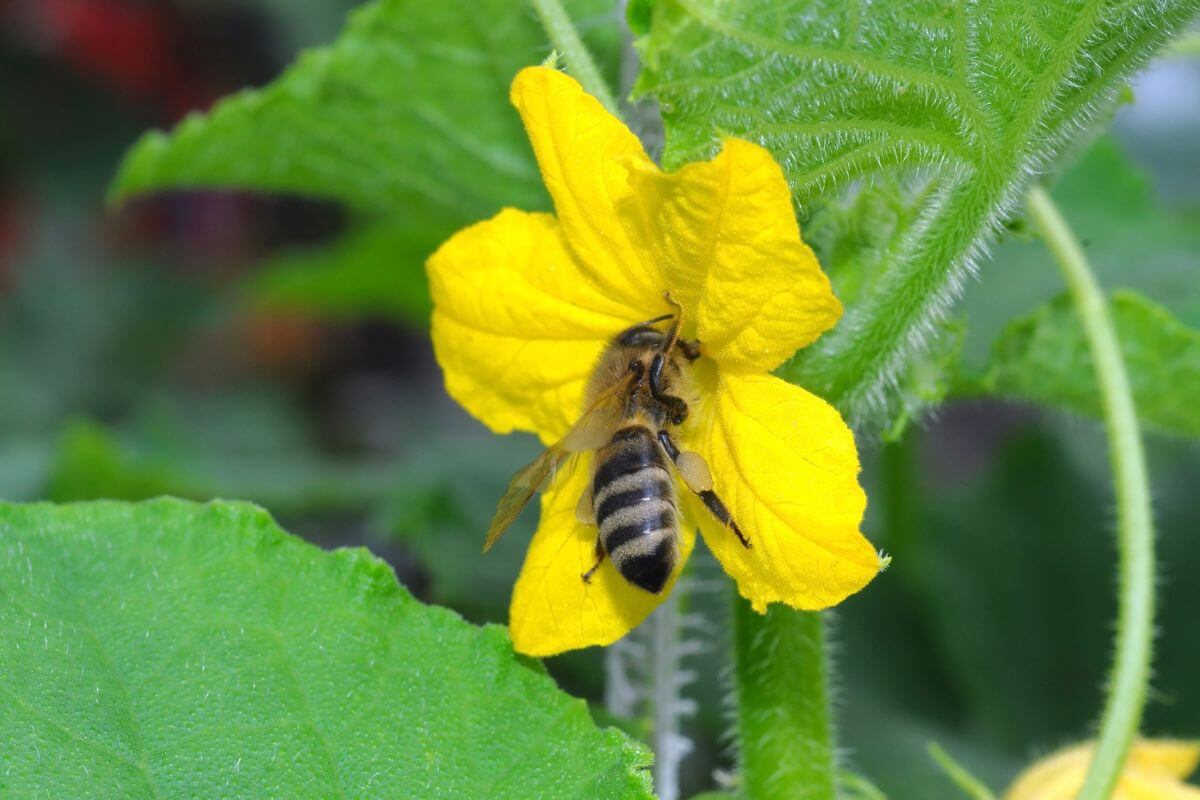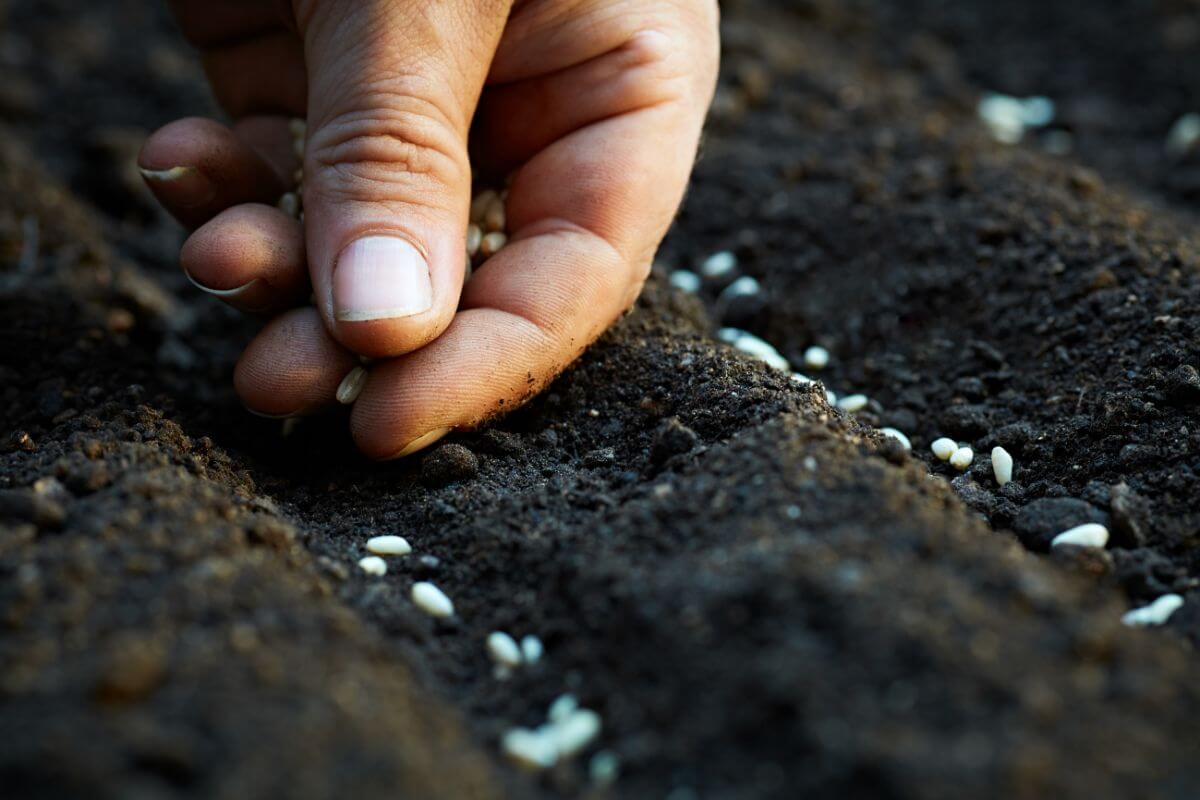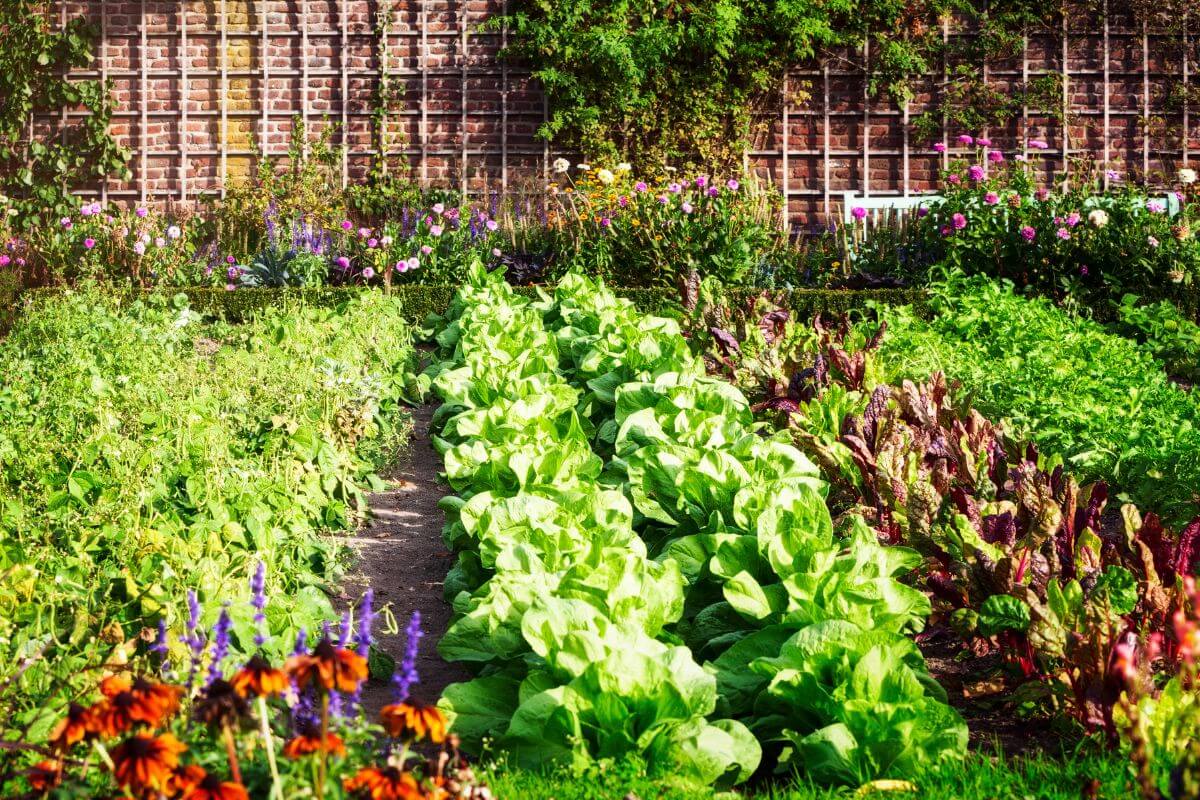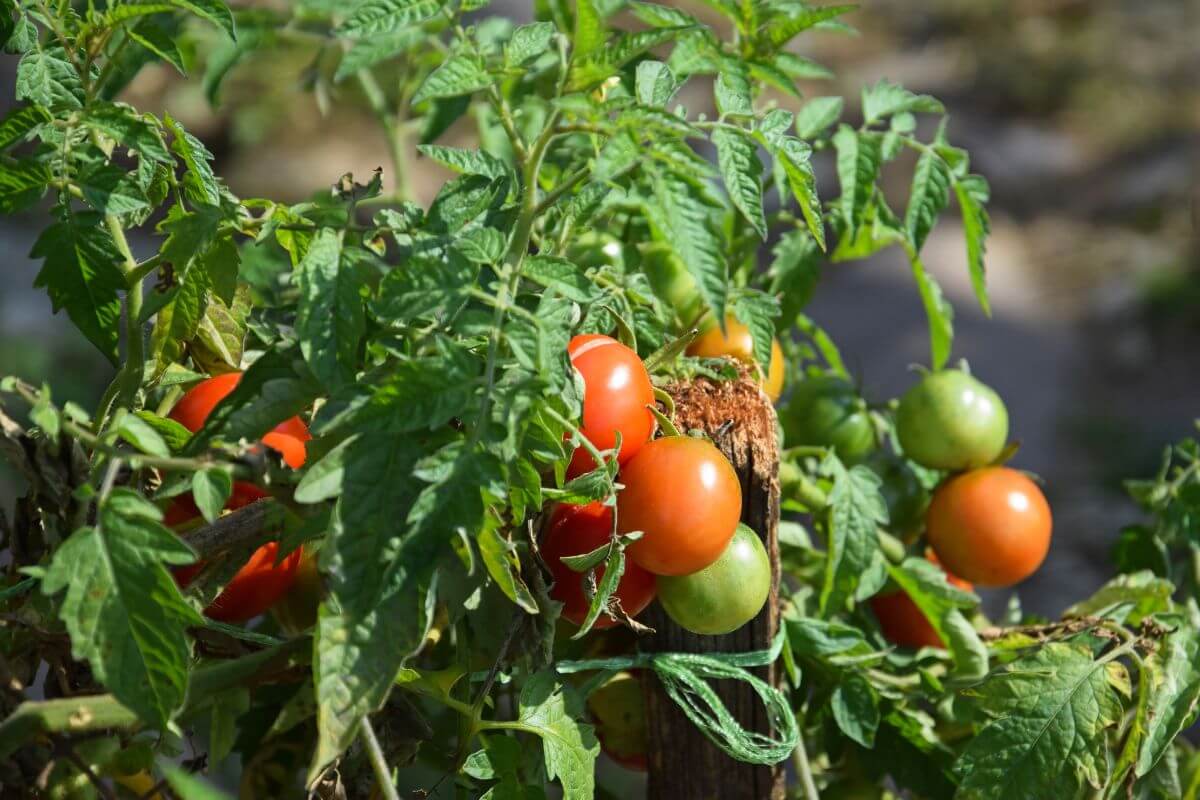Curious about how plants affect our environment and food? The way they reproduce, especially through open pollination, plays a huge role. Open-pollinated plants let nature work its magic without interference, creating a cycle of life that’s both diverse and sustainable.
This guide will walk you through the key differences between open-pollinated and hybrid plants. We’ll cover the benefits of open pollination, including the vital role it plays in preserving our ecosystem and offering a path to self-sufficiency. You’ll also learn about the challenges and advantages of hybrid plants, particularly in the context of modern agriculture.
Discover how your choice of seeds can impact the environment and your garden’s future. Whether you’re a seasoned gardener or just starting, understanding open pollination is essential for cultivating a thriving, natural garden.
7 Key Takeaways on Open Pollination
- Open-pollinated plants keep different traits in the plant population healthy by letting nature pollinate them naturally.
- Open-pollinated seeds can be saved every year, saving money because you don’t have to buy new seeds.
- Heirloom plants are special types that keep old farming ways alive and taste good.
- Some plants can make seeds on their own, which makes them good for small gardens or new gardeners.
- Open pollination helps lots of different plants grow, which is good for farming that lasts.
- Big farms like hybrids because they all look the same, but small farms can grow lots of different plants.
- Using open-pollinated seeds can help communities share seeds, making local farms stronger and less dependent on big companies.
What Are Open Pollinated and Hybrid Plants?

What do you mean when you say a plant is ‘open-pollinated’? This means that pollen is allowed to move freely between these plants — through insects, birds, wind, or humans. This then leads to offspring that are genetically diverse and have various traits.
You can save the seeds of open-pollinated plants to select traits suited for a specific environment. In doing so, you become more self-sufficient and promote biodiversity.
Then there are hybrid plants. These plants are specifically grown by commercial growers who cross-pollinate specific types of plants to achieve certain traits. Plant breeders tend to aim for traits like disease resistance or uniformity.
However, hybrids can produce sterile seeds or seeds with unpredictable qualities. They may be preferred in large-scale farming, but they don’t have the stability or adaptation abilities of an open-pollinated plant.
In an open-pollinated plant, you rely on natural pollination to preserve genetic material. That emphasizes the importance of saving seeds and the role of various pollinators when farming sustainably.
- Learn more: Comparing Open Pollinated Vs Hybrid
What Is an Open-Pollinated Seed?

A seed is open-pollinated when it comes from a plant that has gone through pollination’s natural mechanisms.
There has been a surge of interest in open-pollinated seeds in recent years. This could be because of the pushback against pesticide and GMO companies.
You don’t often find open-pollinated seeds in shops and garden centers. These seed types seem to be sold exclusively at the RARE SEEDS website and Seed Saves Exchange website.
You can also find open-pollinated seeds on Amazon (check the latest prices), but these tend to sell out fast and don’t happen very often. That could be because companies would rather you buy hybrid seeds from them. After all, it would not be in the best interest of these businesses to provide a product that lasts a lifetime.
When open-pollinated seeds are grown apart from the rest, they will grow into plants that are ‘true to type’ indefinitely.
What Are the Benefits of Open Pollination?

Choosing open pollination for your plants comes with significant advantages. One of the key benefits is the ability to save your seeds.
This practice allows you to keep using the seeds from your best-performing plants, tailoring them to your specific soil and cultivation techniques. The result? A sustainable source of seeds that are perfectly adapted to your garden.
Here are some more reasons why open pollination is a great choice:
- Boosts Biodiversity – By letting nature take its course, you’re helping to maintain a rich genetic pool. This means more variety within your plant community and better resilience against pests and diseases.
- Variety and Strength – Open-pollinated seeds lead to plants with a wide range of characteristics. This diversity is a strength, especially in changing conditions, as it allows the plants to become more robust over time.
- Cultural Heritage – Many open-pollinated seeds have been nurtured and passed down through generations. Growing these plants is a way to connect with the past and preserve traditional horticultural practices.
When you choose open-pollinated seeds, you’re not just planting a garden — you’re cultivating a piece of history and a future of sustainable growth.
What Should You Choose: Open Pollination, Hybrid, or Heirloom?
The most common seeds today are hybrid seeds, specifically F1 hybrids. These are made by cross-pollinating two different inbred lines, chosen for specific traits like disease resistance, growth habits, heat tolerance, and larger flowers.
Here’s a comparison of hybrid, heirloom varieties, and open-pollinated seeds:
| Seed Type | Description | Advantages | Disadvantages |
|---|---|---|---|
| Hybrid (F1) | Cross-pollinated from two different inbred lines. Shows “hybrid vigor,” stronger growth, and higher yields. | Easier to breed for specific traits Less labor-intensive More uniform plants | Seeds from hybrid plants do not retain parent traits More expensive Often needs chemical sprays and specific growing conditions |
| Heirloom | Open-pollinated seeds are passed down through generations, often for 50+ years. | Adapts well to local conditions Often better taste Helps preserve plant diversity | May not be as uniform Less disease resistance compared to hybrids. |
| Open-Pollinated | Seeds resulting from natural pollination methods (insects, birds, wind, or humans). Best for home gardeners. | Allows growing various plant varieties in small plots, with less risk of cross-pollination. | May require more space to avoid cross-pollination, and can be less uniform. |
What should your reasons be for choosing a type of seed?
- Hybrid Seeds – Chosen for specific traits, strong growth, and high yields but require new seeds each season.
- Heirloom Seeds – Preserve plant diversity, adapt well to local conditions, and often have better flavor.
- Open-Pollinated Seeds – Ideal for home gardeners, allowing for diverse plant varieties with less risk of cross-pollination.
What Are the Types of Open Pollinated Plants

The best thing about buying open-pollinated or heirloom seeds is that you can save seeds from your best plants to grow next year. Before saving seeds, check if your plants are cross-pollinated or self-pollinated, which you can find on the seed packet or online.
- Cross-Pollinating Plants – These plants are pollinated naturally by insects, wind, or birds, resulting in a mix of genetic traits within the plant population. Common examples include tomatoes, peppers, squash, and corn.
- Self-Pollinating Plants – These plants can pollinate themselves within their flowers, which helps them stay consistent in their traits from one generation to the next. Common examples include peas, beans, lettuce, and some types of tomatoes.
Open Pollination Final Thoughts
Deciding between open pollination and hybrid seeds comes down to what you’re doing. If you’re all about big, even crops and you’re farming to sell, hybrids are the way to go. They’re great for making sure everything grows the same and for getting a lot all at once.
And if you’re in the business of selling seeds, hybrids are much simpler to produce. But, if you’re a passionate gardener who loves the whole growing process, open-pollinated seeds are a treasure.
I’d suggest trying out different open-pollinated seeds to see what works best in your spot. You might even start swapping seeds with folks nearby. It’s a cool way to find new plants that are perfect for your garden.
When a plant thrives in your neighbor’s garden, it’s usually a good sign it’ll do well in yours, too. There’s something satisfying about saving seeds and perfecting unique plant varieties. Plus, it’s a money-saver.
By supporting biodiversity and moving away from super-technical farming, we can all help the planet. A lot of cash is made from huge, chemically treated farms, but there’s a push to go back to natural, diverse farming.
If more people grow their open-pollinated plants, we might just find a way to live alongside nature again.
Open Pollination FAQs
1. What Are Examples of Open-Pollinated Plants?
Open-pollinated plants, like tomatoes, peppers, squash, corn, peas, beans, and lettuce, get pollinated naturally by bugs, wind, or the environment.
This lets them make seeds that grow into plants similar to their parents. Some, like peas, beans, and certain tomatoes, can pollinate themselves, making it easy to save their seeds and keep their special traits going.
2. What Is Closed Pollination?
Closed pollination happens when pollen moves within the same flower or between flowers on the same plant. This self-pollination can happen in plants that can reproduce without needing outside help from things like bugs or wind.
3. What Is the Major Difference Between Open-Pollinated to GMOs?
Open-pollinated plants get pollinated naturally, while GMOs are made in labs by adding genes from other organisms into a plant’s DNA. You can save seeds from open-pollinated plants and grow them again, keeping their traits. GMO seeds are usually sterile, so you can’t save and replant them each year—you need to buy new seeds from the companies that make them.
4. How to Know if a Plant Is Open-Pollinated?
To know if a plant is open-pollinated, see if it gets pollinated naturally by bugs, wind, or the environment. These plants make seeds that grow into new plants similar to the parent. Just make sure different varieties of the same kind of plant don’t mix pollen. This way, you keep different traits alive over many years.
Discover amazing tips and guides on gardening with these related articles:


